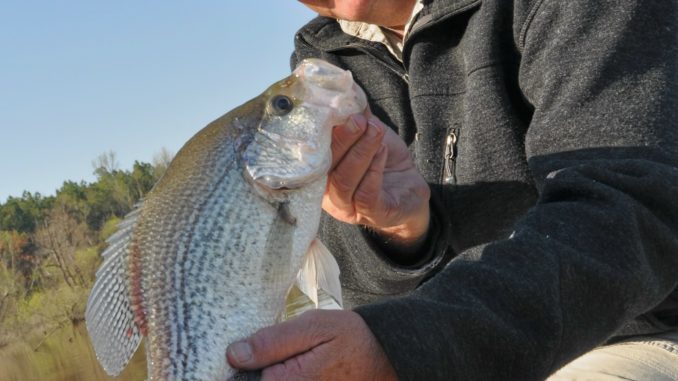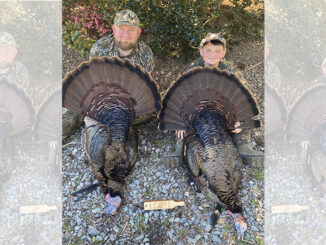
Shad kill in 2011 winter caused crappie to starve last summer
Jordan Lake anglers have known since August 2012 that striped bass had been hammered in a kill that left 5,000 floating fish on the surface of the 13,940-acre impoundment. What they didn’t know until now was why crappie fishing also suffered a crash dive. But the good news is that fishing for slabs should be on the upswing this fall, winter and next spring.
Jessica Baumann, a N.C. Wildlife Resources Commission fisheries biologist, explained this week she believes many stripers and crappie starved to death because of a 2011 event that involved more dead fish.
“We can’t say with 100-percent certainty this is the reason, but we think what happened started in February 2011 with a winter (threadfin) shad die-off,” she said. “If you remove a food source from a reservoir heavy with predators — largemouth bass, catfish, stripers, crappie, other panfish — and you stress stripers with high water temperatures, the stripers went into (that summer) already below good condition because of the lack of food. Combined with the heat, it caused a large fish kill. The stripers basically starved to death.”
A dearth of shad also caused problems for Jordan’s black crappie. These fish, especially the bigger ones, eat mostly threadfin shad. With fewer baitfish in the shallows — which were too hot for crappies — and none schooling in deep water, Jordan’s crappies also succumbed to a lack of food in 2012.
“The larger crappies especially were hit hard,” said Baumann, who expects these fish to rebound quickly.
“When we sampled bass this spring, we saw on our depth finders the Jordan forage base is back,” she said. “We’ve stocked threadfins the last couple of years, (2,400 per year), and they reproduce quickly.”
Net surveys also showed a large percentage of 2-year-old fish, which means good reproduction and similar growth rates to the 2-year-olds sampled during 2009’s banner year.
Contrary to rumors, the Commission also hasn’t halted striped bass stockings in Jordan Lake.
“For a while, we stocked 75,000 striper fingerlings per year into Jordan, and the past two years we’ve stocked 100,000 each year,” Baumann said. “We’ll never stock hybrids again because we know they may get into the gene pool of anadromous (Cape Fear River) striped bass. But yes, we’ll continue to stock stripers at Jordan Lake.”
Baumann said anglers should begin to notice 2-year-old crappie in their Jordan creels this fall and next spring.
“There should be a good number of 1 ½- to 2-pound crappies caught next spring,” she said.
As for crazy weather events, strange habitat changes and reactions of Jordan’s fish species, all anglers can do is keep their fingers crossed and hope for the best.




